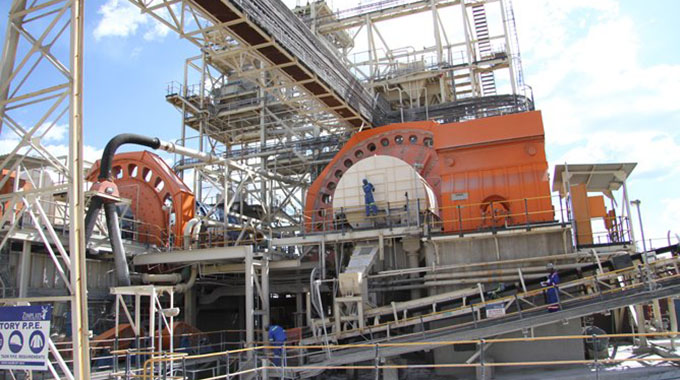Global commodity price slump chokes Zimplats
PLATINUM group metals (PGMs) producer Zimplats has been affected by the global softening of metal prices, which saw the firm incur a 32 percent revenue drop in the six months ended December 31, 2023.
Due to the negative developments in the global economy, prices for most mineral commodities including platinum, nickel and lithium have been declining, negatively affecting export receipts in the economy.
The mining industry is one of Zimbabwe’s economic mainstays with the sector presently contributing about 70 percent of the country’s foreign currency earnings.
Zimplats chief executive officer, Mr Alex Mhembere, noted in the condensed consolidated interim financial statement for the half year ended 31 December 2023 that profit before income tax in the period under review at US$14,2 million was 94 percent lower than US$221,5 million recorded in the same period last year.
“Revenue at US$372.8 million was 32 percent lower than prior year comparative period as average US$ metal prices softened during the period.
“Gross revenue per 6E ounce sold for the period declined by 38 percent to US$1 164 from US$1 870. Sales volumes of 6E ounces were 10 percent higher at 320 196 ounces compared to 291 751 in the prior period,”
Cost of sales at US$342 million was eight percent higher than the same period last year’s US$315,6 million.
Consequently, the firm noted that gross profit margin was eight percent, a 34 percent reduction from 42 percent achieved in the same period last year mainly due to the impact of higher than budget operating cost per 6E ounce in the current period.
Cash operating cost per 6E ounce produced at US$829, increased by one percent from the US$822 reported in the same period last year mainly driven by local inflation and increase in labour headcount due to introduction of Third concentrator plant and pillar reclamation.
Resultantly, profit before income tax for the period at US$14,2 million was 94 percent lower than US$221,5 million recorded in the same period last year.
Income tax for the half year at US$23 million (2022: US$61,9 million) was below prior year comparative period mainly due to lower profit before tax.
However, this was largely offset by the increase in deferred tax expense following the change in the corporate income tax rate from 24,72 percent to 25,75 percent which resulted in loss after tax for the period of US$8.8 million compared to a profit after tax of US$159,6 million achieved in the same period last year.
The Group generated net cash inflows from operating activities amounting to US$70,1 million (2022: US$163,7 million) and paid dividends of US$100 million (2022: US$120 million).
However, Mr Mhembere said with the operating environment characterised by softening metal prices affecting the financial performance in the period under review, the mining entity has come up with survival strategies.
“In response, the company has instituted a number of survival strategies with stringent measures to contain costs and preserve cash.
“We remain focused, committed and determined to ensuring the overall success of the business. In addition, the Group’s focus on safety remains unwavering and we continue to invest in resources and technologies to ensure achievement of our zero-harm goal.”
Detailing the operations in the period under review, ore mined increased by five percent to 4,0 million tonnes from 3,8 million tonnes for the same period last year.
This was mainly due to pillar reclamation at Rukodzi Mine in addition to Mupani Mine production output which has increased from 1,1 Mtpa to 1,4 Mtpa.
Tonnes milled, at 3,9 million tonnes, increased by 6,4 percent compared to same period last year mainly due to Third Concentrator Plant mill volume optimisation.
The smelter expansion project targets a capacity of 380 000 tonnes of concentrates (about 538 000 6E ounces).
The firm notes that the sulphur dioxide (SO2 ) abatement project has progressed well with significant offsite equipment manufacture being complete.
“As at 31 December 2023, a total of US$295,9 million (inclusive of US$75,9 million in prepayments) had been spent on both projects against an approved budget of US$521 million.”-chronicle











